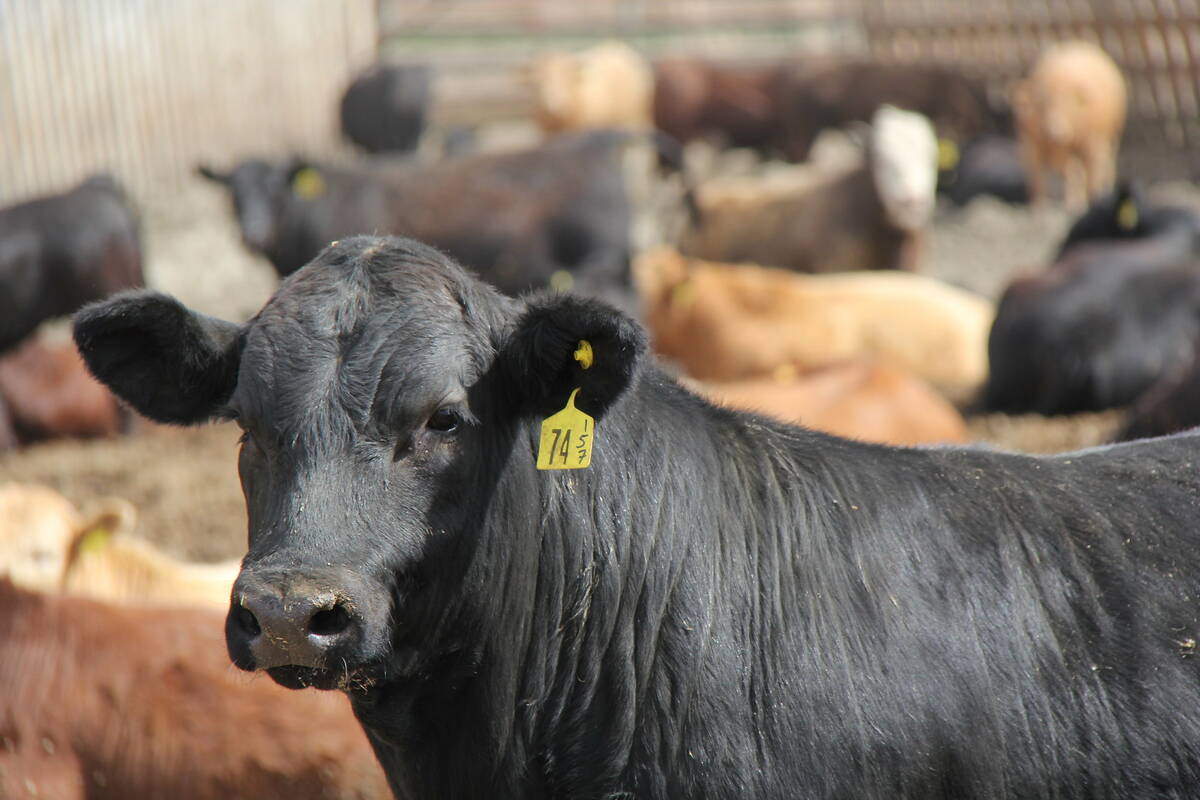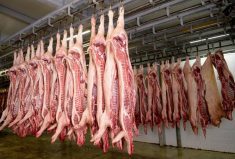After rallying up, but failing to fill a gap between $91.475 and $91.650, lean hog prices on the weekly nearby candlestick chart turned back down on Feb. 24. The ensuing reversal pattern (sell signal) that developed is referred to as a harami on a candlestick chart.
Lean hog prices have since lost more than six cents per pound in the past five weeks.
Candlestick charting provides an insight into market activity that is not readily apparent with the conventional bar-type charts. When you see a black bar, the sentiment is bearish; when the bar is white, it is bullish.
Read Also

U.S. livestock: CME cattle futures higher on year-end positioning
Chicago | Reuters – Chicago Mercantile Exchange cattle and hog futures climbed on Tuesday on position squaring between the Christmas…
Harami suggests a waning in momentum and a change in trend. At a market top, the harami is identified by a long white body followed by a short black body which is contained within the parameters of the preceding long white body. Harami in Japanese means pregnant.
The Japanese are regarded as the true pioneers of market technical analysis. They began trading forward rice contracts (futures) in 1654 and by the year 1750 developed a relatively sophisticated way to analyze the markets.
These same techniques have evolved over nearly two and a half centuries into an amazingly powerful modern-day charting method referred to as candlestick. Now anyone can learn how the master minds of the Orient have attained wealth in their markets and in ours.
Virtually all modern-day technical analysis used in conjunction with bar charting, such as trendline analysis and pattern recognition, can be applied in the exact same way using candlesticks with additional advantages.
Candlestick charts allow the viewer at a casual glance to spot technical strength and or weakness by highlighting the relationship between the opening and closing price for each line.
The Japanese method of charting is called candlestick because the individual lines resemble candles. The exact same data are used in traditional bar charting; open, high, low and close are all that’s required. The daily line shows the open, high, low and close.
The thick part or candle is called the real body. It highlights the range between the open and close. If the close is above the open then the body will be white. When the real body is black this simply means the close was below the open. The lines above and below the real body represent the high and low ranges for the period and are called shadows.
The long black body illustrates a bearish period in the market with an opening near the day’s high and close near the day’s low.
The long white body is the opposite of a long black body and shows technical strength with an opening near the low and a close near the high in a wide range period. The small body represents a tight range between the open and close. However, when combined with other patterns they can be very significant, such as in the formation of a harami.
The candlestick method gives you deeper insight into market analysis by utilizing numerous interpretations for intra-line activity. Hence, the user has a timely advantage in spotting key market turning points for all time frames.
Candlesticks are a useful stand-alone tool or can be used in conjunction with other technical tools such as stochastics or RSI, creating a vast array of techniques and possibilities.
It is important for farmers to be aware of reversal patterns that routinely occur in grain and livestock charts. By recognizing buy and sell signals, producers can be better informed on price direction and take advantage of pricing opportunities.
Lean hog prices have been trading in a sideways $8 range for the past five months. Support comes in at $83 and resistance is up at $91. Rectangular patterns like this tend to be consolidation areas, which often form prior to prices having their next big move.
Send us your questions or comments about this article and chart.
— David Drozd is president and senior market analyst for Winnipeg-based Ag-Chieve Corp. Opinions expressed are those of the writer and are solely intended to assist readers with a better understanding of technical analysis. Visit Ag-Chieve online for information about grain marketing advisory services, or call us toll-free at 1-888-274-3138 for a free consultation.














